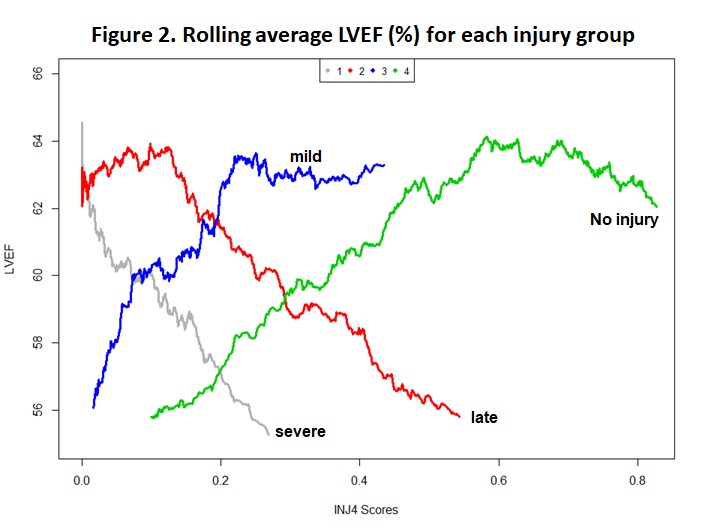Molecular Profiles of Injury in Heart Transplant Allograft: Relationship to Rejection, Ejection Fraction, and Survival
1University of Alberta, Edmonton, AB, Canada, 2Alberta Transplant Applied Genomics Centre, Edmonton, AB, Canada, 3., ., AB, Canada
Meeting: 2020 American Transplant Congress
Abstract number: 95
Keywords: Biopsy, Heart, Heart/lung transplantation, Rejection
Session Information
Session Name: Biomarkers, Immune Assessment and Clinical Outcomes I
Session Type: Oral Abstract Session
Date: Saturday, May 30, 2020
Session Time: 3:15pm-4:45pm
 Presentation Time: 4:27pm-4:39pm
Presentation Time: 4:27pm-4:39pm
Location: Virtual
*Purpose: In previous studies we used microarray analysis of gene expression to identify rejection in heart transplant endomyocardial biopsies, and found that this also revealed an acute injury phenotype. The present study aimed for comprehensive study of early and late parenchymal injury compared to the rejection phenotypes, and to define how parenchymal injury relates to function and outcomes.
*Methods: We studied injury-related changes in gene expression in 1320 biopsies (645 patients) from 13 centers in the INTERHEART study using microarrays. Biopsies were classified based on expression of previously annotated injury-associated transcript sets, analyzed by unsupervised principal component and archetypal analysis.
*Results: Analysis of injury transcript expression identified four injury phenotypes (fig. 1A): I1severe; I2late (atrophy-fibrosis); I3mild; and I4no-injury. Injury scores varied over time, indicating an early injury group (figure 1B), a relatively normal group, a late injury group, and a severe injury group. Comparison with rejection diagnoses showed that severe and late injury were often, but not always, associated with rejection. The late changes included high expression of B cell and plasma cell transcripts, which in other organs indicate atrophy-fibrosis. TCMR was almost always associated with injury, but ABMR was sometimes not. Injury classes (severe and late – fig. 2), like rejection classes reported previously, were associated with depressed LVEF. The severe and late injury groups were associated with reduced 3-year survival. When the relative impact of injury vs. rejection were compared in random forests, the strongest predictors of impaired LVEF and reduced 3-year survival were the injury archetype scores, not the rejection classes.
*Conclusions: Molecular changes of parenchymal injury in heart transplant biopsies reveal severe and late changes associated with reduced LVEF and 3-year survival. Injury is often, but not always, associated with (presumably caused by) rejection, particularly TCMR, and is the principal determinant of function and survival. ClinicalTrials.gov # NCT02670408.
To cite this abstract in AMA style:
Halloran P, Reeve J. Molecular Profiles of Injury in Heart Transplant Allograft: Relationship to Rejection, Ejection Fraction, and Survival [abstract]. Am J Transplant. 2020; 20 (suppl 3). https://atcmeetingabstracts.com/abstract/molecular-profiles-of-injury-in-heart-transplant-allograft-relationship-to-rejection-ejection-fraction-and-survival/. Accessed November 6, 2025.« Back to 2020 American Transplant Congress


